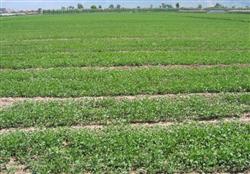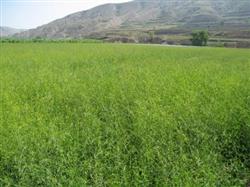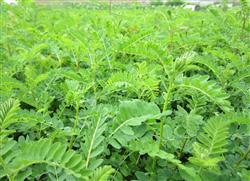How to manage the planting of Astragalus membranaceus?

How to manage the planting of Astragalus membranaceus? Please introduce the planting of Radix Astragali can refer to the following methods for management: 1, inter-seedling, fixed seedling, supplementary seedling: no matter it is direct seeding or seedling raising, after the seedling comes out, it is necessary to fix the seedling between rows. The seedlings should be early to avoid crowding and shading each other and competing for fertilizer and water. The seedlings of Astragalus membranaceus are generally 2mi for 3 times, the first time when the seedling height is 6 cm, and the second time when the seedling height is 10-12 cm, and then fix the seedling. There are 4 seedlings per hole, 1 strong seedling every 10-12 cm, 1 seedling every 2-3 cm (the large seedlings can be transplanted to allow the young seedlings to continue to grow), and the weak seedlings, small seedlings and diseased seedlings can be removed. When fixing seedlings, if there is a lack of seedlings, replanting should be carried out in the afternoon or evening on cloudy or sunny days. Seedlings can be cultivated in advance or selected from seedlings from time to time. Pay attention to watering after planting. The replanted seedlings have many branches, so when there are too many missing seedlings, it is best to reseed with the seeds that have been promoted to sprout. Radix Astragali was treated with root, and its yield was composed of root weight per plant and number of plants per unit area. The cultivation practice in recent years shows that proper close planting can increase the leaf area index and the yield of Astragalus membranaceus, but the root weight and the quality of Astragalus membranaceus are decreased. Comprehensively, the planting density of Astragalus membranaceus per mu should be about 18000-20 000 plants. Good conditions of fertilizer and water, fertile soil, adequate nutrients can be properly close planting; poor conditions of fertilizer and water, lack of nutrients should be sparse. 2. Weeding in mid-tillage: Astragalus seedlings grow slowly, and grass seedlings often grow after emergence, if not paid attention to, it is easy to cause grass famine, so weeds should be weeded in time. Weeding is generally combined with ploughing. Mid-tillage can loosen the soil, cut off the soil capillaries, prevent water evaporation, and play a role in preventing drought and preserving soil moisture. After heavy rain and long rain, ploughing plays a role in dispersing soil moisture and eliminating waterlogging. This is what the folk customs "hoe has water" and "hoe has fire" talk about. Mid-ploughing is generally carried out 4 times a year. The first intertillage and weeding was carried out when the seedling height was about 5 cm, the second intertillage was carried out when the seedling height was 7-8 cm, and the third intertillage was carried out after the seedling was fixed, and then it was carried out according to the weeds in the field. After the second year, it will be ploughed once in April, June and September respectively. The depth of mid-tillage is generally carried out according to the principle of shallow seedling stage, deep adult plant, shallow seedling side and deep row, so that it does not hurt the seedling, bury the seedling, hurt the root and leave no grass. Hoe fine, hoe evenly, do not miss hoe. 3. Topdressing: Astragalus likes to be fertilized. In addition to applying sufficient basal fertilizer, in order to meet the nutrient needs of different growth stages and increase the yield, the first and second years of growth were combined with ploughing and weeding and topdressing 3 times a year. The first topdressing combined with the second intermediate ploughing and weeding should be applied lightly and partially, with more application of small seedlings and less application of large seedlings, so as to promote small seedlings to drive big seedlings and turn weak seedlings into strong seedlings, so as to achieve the goal of uniform, uniform and strong seedlings. Generally, 1000 kg of human feces and urine per mu or 15 kg of ammonium sulfate mixed with water. The second time combined with the third intermediate ploughing and weeding was carried out. 1500 kg of compost, 50 kg of superphosphate and 10 kg of ammonium sulfate per mu were mixed evenly, then ditched and applied, and then covered with soil. For the third time, after the seedlings withered in winter, 2000 kg of stable fertilizer per mu plus 50kg of superphosphate and 150kg of cake fertilizer were mixed and applied to the field, and the soil was applied to prevent freezing. 4. Irrigation and drainage: Astragalus membranaceus consumes less water at seedling stage. In order to promote root rooting, increase root length and increase astragalus yield, under the condition of sufficient moisture and sowing, there can be no watering. If the soil moisture is insufficient and the weather is dry, use small water or interlaced irrigation, do not flood irrigation. In the fruiting seed ripening period, in case of high temperature and drought, we should also irrigate the seeds in time to promote the seeds to mature normally, reduce the hard seed rate and improve the seed quality. Excessive soil moisture in the rainy season will lead to root decay. Plots prone to stagnant water should pay attention to timely drainage and reduce soil moisture in order to facilitate the normal growth of roots. 5. Topping and budding can break the growth advantage of the top of the main stem, inhibit the plant height of astragalus, control the plant growth above ground, reduce nutrient consumption, promote root growth, and increase the yield of astragalus, which is an important part of high-yield cultivation of astragalus. According to the production investigation, the yield can be increased by about 15.4%. Buds are usually removed when buds appear in mid-June, usually 4 times a year. Topping should be "timely". Topping too early will affect the growth of the aboveground part, reduce the leaf area coefficient and affect photosynthesis. If we reduce the output and hit the top too late, it will not play its due role. According to the growth and development characteristics of Radix Astragali, the timely topping time should be in late July. 6. Management of overwintering period: Astragalus membranaceus is a perennial plant, which needs to go through 180 Mir 190 days from aboveground withering and root overwintering bud formation to turning green in the second year. Doing well the management of this stage is very important to the growth and development of Astragalus membranaceus in the second year. Necessary measures should be taken in production to do a good job in the overwintering management of Astragalus membranaceus. (1) cleaning up the countryside: after the aboveground parts of Astragalus withered before winter, the withered branches and leaves should be removed in time, and concentrated burning or composting should be concentrated to eliminate the source of overwintering diseases and insect pests and reduce the occurrence of diseases and insect pests in the following year. (2) fertilization and soil cultivation: after withering seedlings in winter, 2000 kg of rotten stable fertilizer, 50 kg of superphosphate and 150kg of cake fertilizer per mu were mixed and spread flat on the root, and then dug the ditch deeply and covered the fertilizer with ditch mud to prevent the root from freezing. (3) Anti-freezing by irrigation: because of the large specific heat of water, irrigation can increase the heat capacity of soil and has a certain anti-freezing effect. Irrigation should be done once before the Beginning of Winter. Click to get more planting techniques of Radix Astragali
- Prev

How to plant Radix Astragali?
How to plant Radix Astragali? Astragalus membranaceus, also known as Mianqi, Mianqi, Beiqi, is a perennial herb of Leguminosae. It is divided into Northeast Astragalus membranaceus (Astragalus membranaceus) and Inner Mongolia Astragalus membranaceus (Radix Astragali). Its root is used for medicine after drying, and it has curative effects such as replenishing qi and solid surface, diuresis, suppressing toxin and expelling pus, promoting muscle production, etc.
- Next

How can astragalus be planted with high yield?
How can astragalus be planted with high yield? Please give guidance to Astragalus membranaceus, alias Radix Astragali, Radix Astragali, which belongs to perennial leguminous herbs with deep root plants, roots for medicinal purposes, with the functions of replenishing qi, fixing the surface, supporting sore and activating muscles, etc. Astragalus membranaceus has strong adaptability and can be planted in general soil, which is resistant to drought and cold, especially the sandy soil with deep and loose soil layer.
Related
- Fuxing push coffee new agricultural production and marketing class: lack of small-scale processing plants
- Jujube rice field leisure farm deep ploughing Yilan for five years to create a space for organic food and play
- Nongyu Farm-A trial of organic papaya for brave women with advanced technology
- Four points for attention in the prevention and control of diseases and insect pests of edible fungi
- How to add nutrient solution to Edible Fungi
- Is there any good way to control edible fungus mites?
- Open Inoculation Technology of Edible Fungi
- Is there any clever way to use fertilizer for edible fungus in winter?
- What agents are used to kill the pathogens of edible fungi in the mushroom shed?
- Rapid drying of Edible Fungi

